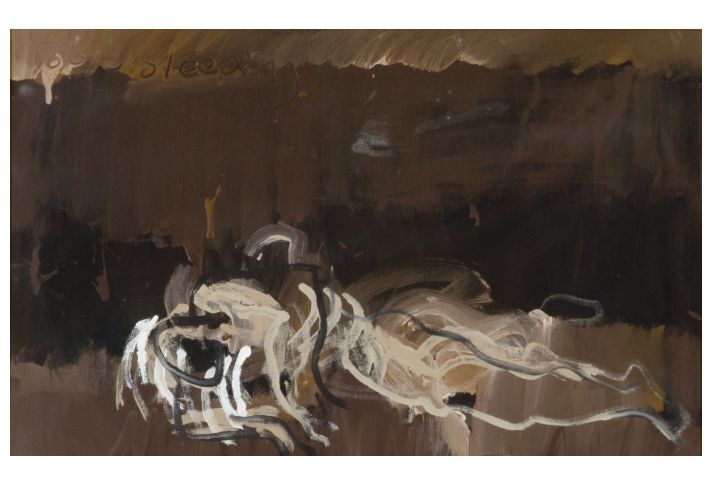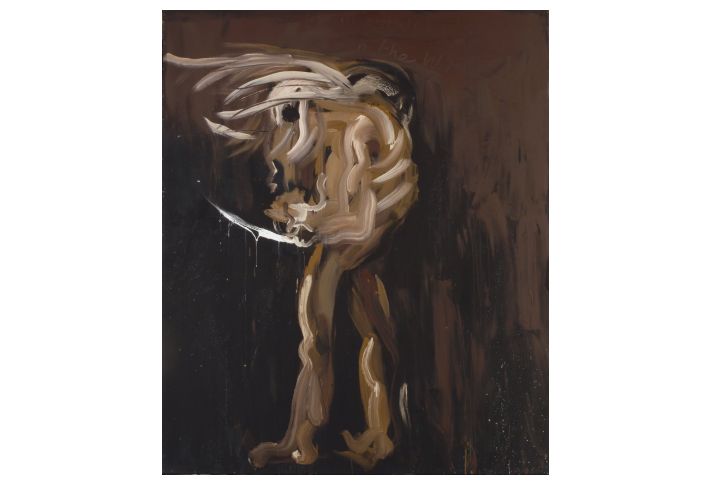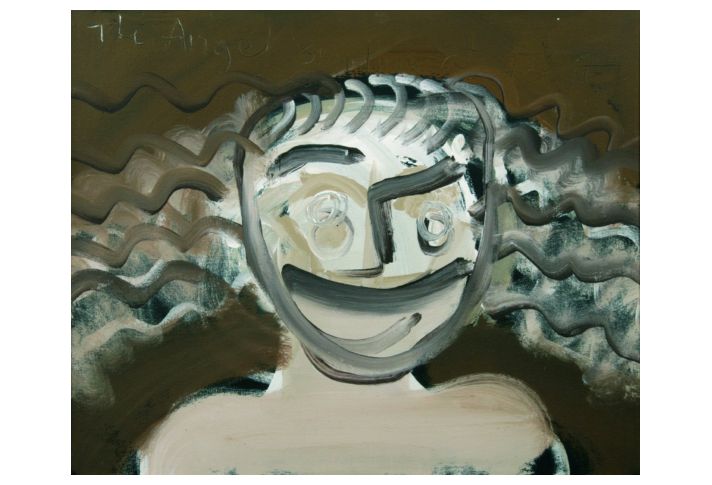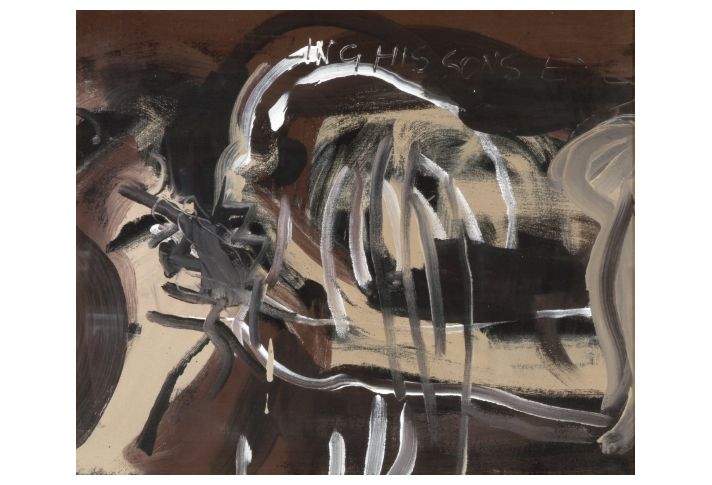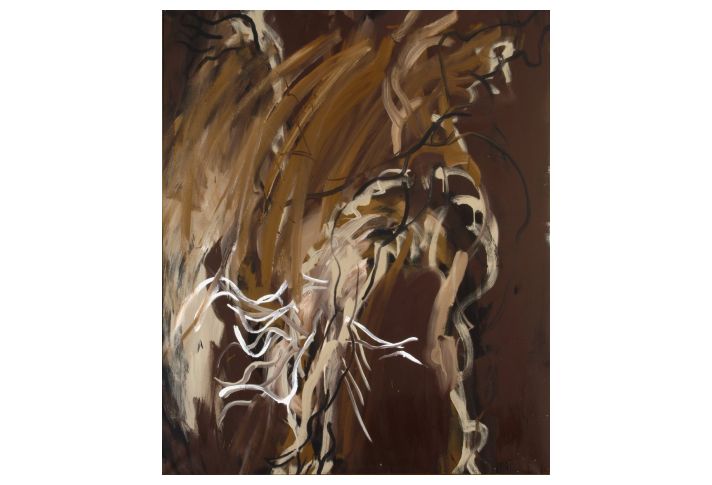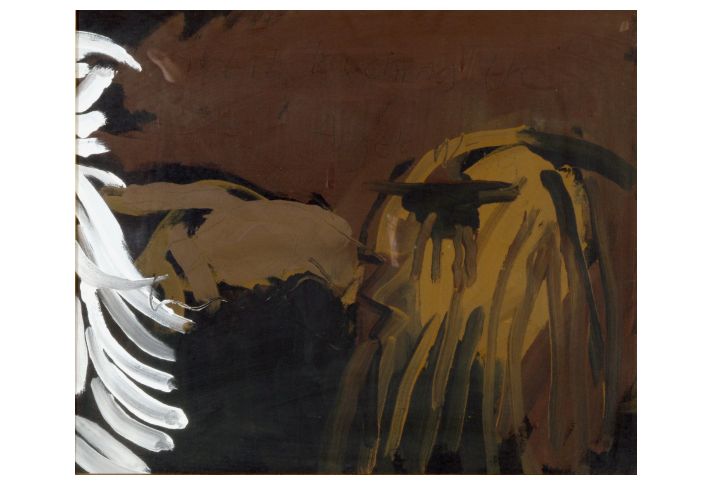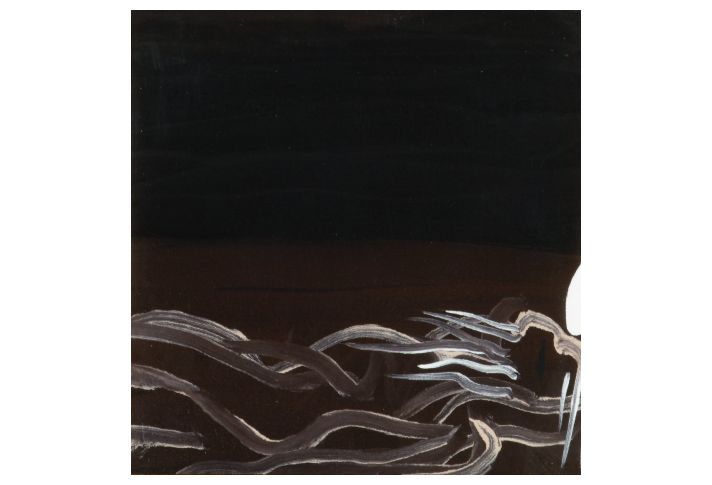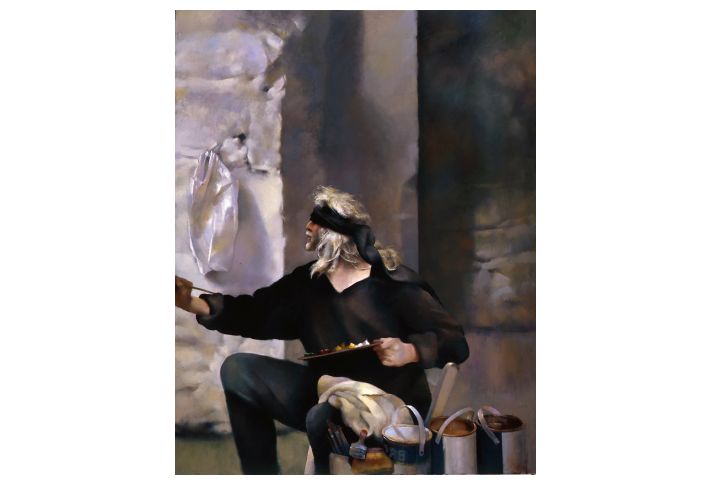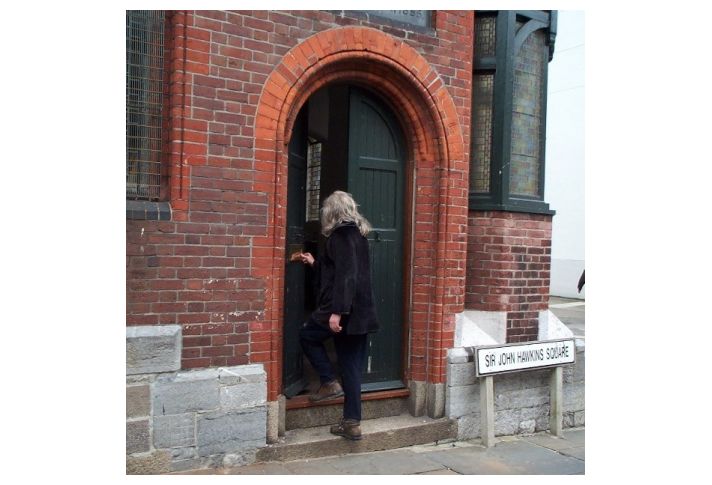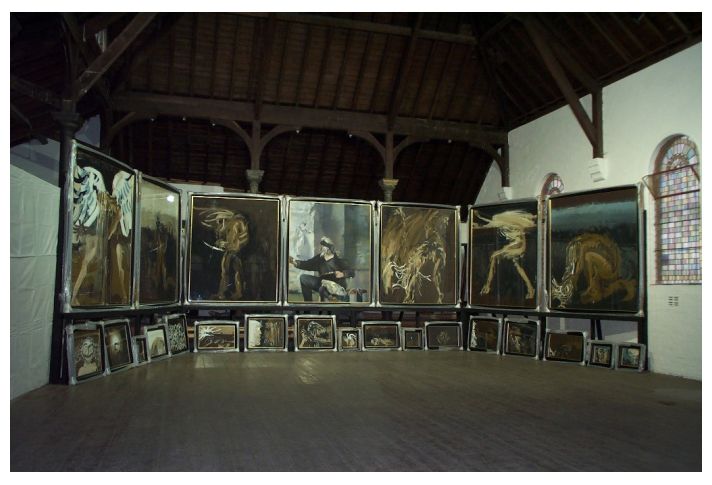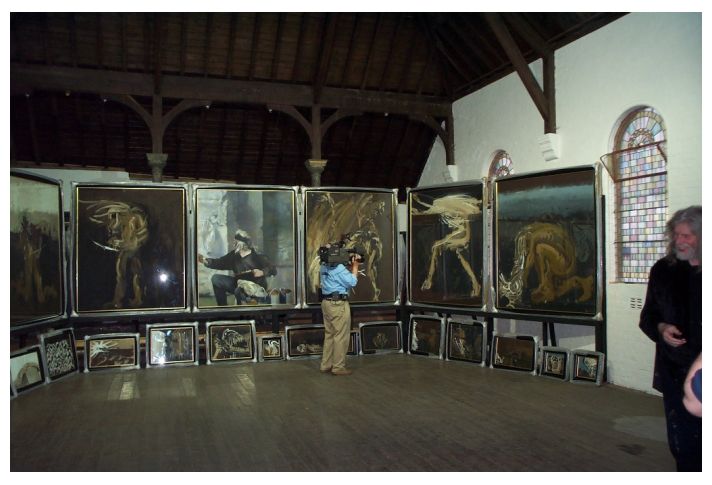Having visited the monastic tradition for his St Antony and St Jerome themes, biblical inspiration appeared again in Lenkiewicz’s work in the form of studies for a planned Project called The Harrowing of Hell, but this was never developed. Instead, he produced a small Project shown in 2000 called Blind Tobit: Paintings Painted Blind. Tobit is usually presented as an allegory of faith persisting through poverty and misfortune, most famously by Rembrandt in the National Gallery’s Anna and the Blind Tobit (1630). In his Blind Tobit, Lenkiewicz tried to detach his mark-making from a lifetime of acquired skill by painting blindfolded in a specially prepared studio.
This skill is valued less and less nowadays, and probably rightly so. There is a sightless quality to any investigation. Inquiry has to makeshift and design its own road; building the road to an uncertain destination. Blindness is inherent in creative activity — so much more is left out than put in — so much refusal to see is involved in seeing. ('A note on painting blind', 2000)
The notes for the showing of the Blind Tobit paintings at the New Street Gallery in June 2000 state:
For nearly two years Plymouth artist Robert Lenkiewicz has been working intensively in a secret studio on an extraordinary new Project. Lenkiewicz has produced a series of paintings 'blind' which nobody, not even the artist himself, has yet seen. These have been inspired by the Old and New Testament stories of blindness, in which the power of sight is portrayed as spiritually dangerous: a sorcerer's spell.
In these paintings, Lenkiewicz has painted the image of a blind man walking forwards. The man is Tobit of the Apocrypha. Imagining Tobit with an unseeing intensity, the blindfolded artist has created a series of over twenty works, unrelated to his more familiar skills.
Lenkiewicz had the paintings wrapped by a gallery assistant and moved, still unseen by himself, to The Mission Hall in Sir John Hawkins Square in Plymouth, which he had recently acquired as a new studio. He invited selected guests to what was a private view both for them and himself. The paintings were then put on display at the New Street Gallery. The artist published a small essay, Paintings Painted Blind: on the theme of Blind Tobit, for the exhibition (available as a PDF).
That same year the Glyndebourne opera company gave the British premiere of Harrison Birtwistle’s opera, The Last Supper. Lenkiewicz was enormously inspired by the production in Plymouth and he began his own version of The Last Supper in which his self-portrait, as Judas Iscariot, remained unfinished, like the Addictive Behaviour Project, at the time of his death. A crucifixion painting also emerged, exploring what Lenkiewicz regarded as the greatest symbol ever invented by mankind: Christ crucified, or, as Lenkiewicz sometimes quipped – “the flayed Jewish phallus on a cross.”









